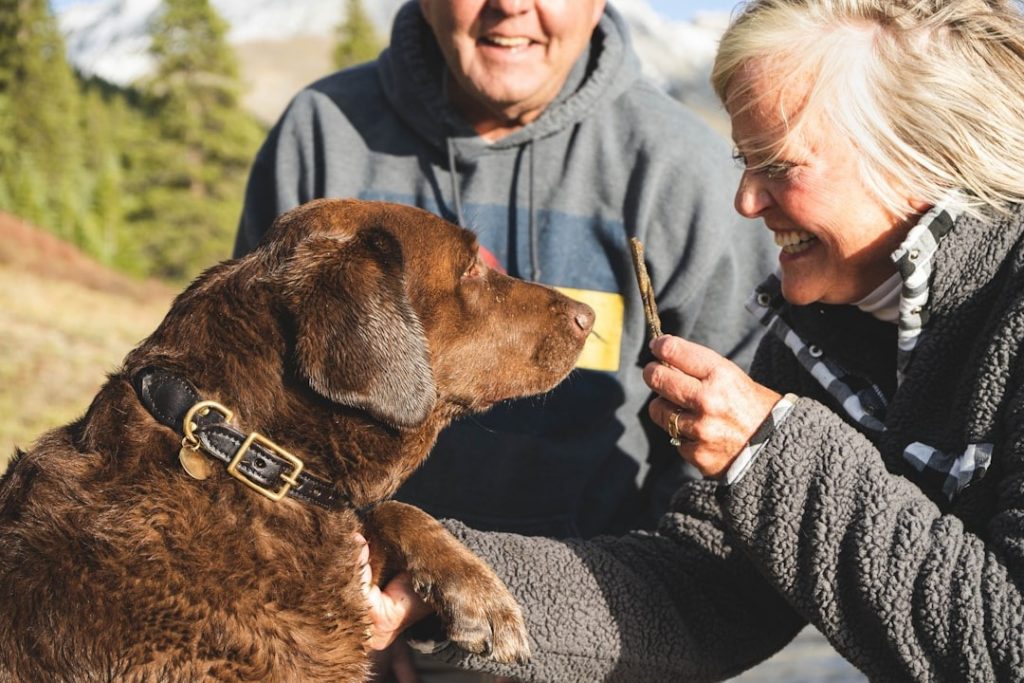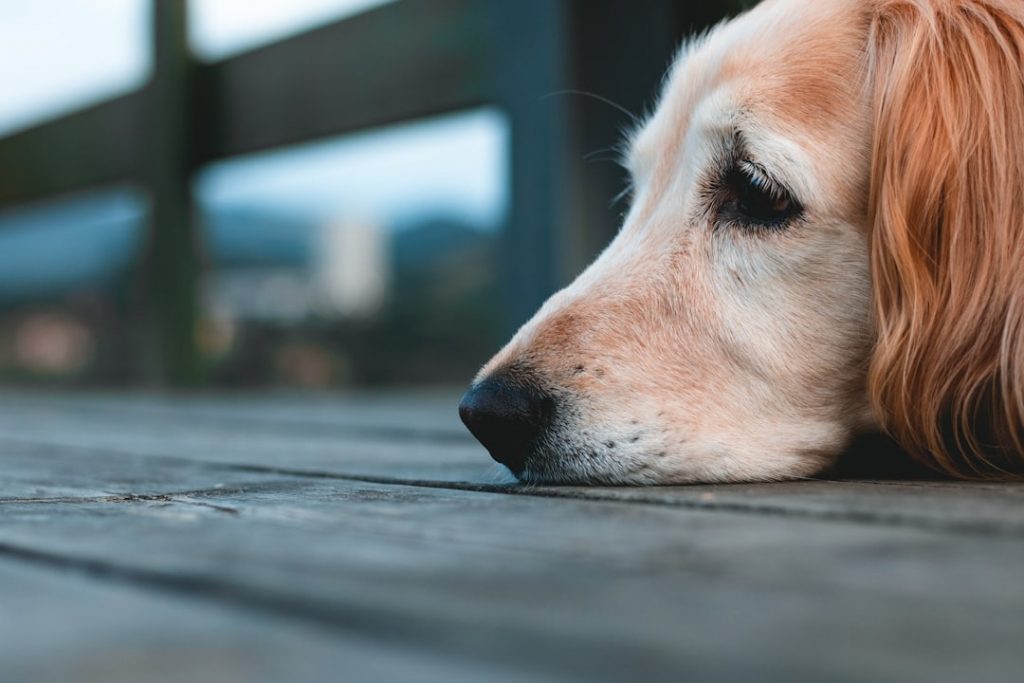Physical Address
304 North Cardinal St.
Dorchester Center, MA 02124
Physical Address
304 North Cardinal St.
Dorchester Center, MA 02124

Our dogs show us endless affection, loyalty, and delight; still, like people, they start to show their age over time. The indications of aging may come on gradually: less interest in walks, cloudy eyes, or fresh bumps and bumps. This presents an opportunity for pet parents even though it can be difficult: recognizing changes early allows you to change their care to guarantee their golden Comfort, dignity, and joy characterize years.
From bodily changes to behavioral shifts, this manual looks at thirty obvious indicators your dog is aging and presents useful advice to help senior dogs.
The age at which dogs are considered “senior” depends largely on size and breed:
“Senior” doesn’t mean “old and frail.” Many senior dogs remain energetic and healthy well into their later years. It simply means their bodies begin to change—and require more attentive care and monitoring.
Arthritis and joint pain make getting up harder. Dogs may take longer to rise, limp after rest, or walk more slowly.
👉 How to help: Provide orthopedic beds, ramps for stairs, and joint supplements (glucosamine, omega-3s).
White hairs around the muzzle, eyebrows, or chest are harmless—but a visible reminder of aging.
👉 Care tip: Regular grooming keeps older coats healthy.
Cataracts or nuclear sclerosis may cause cloudy eyes, bumping into objects, or hesitancy in the dark.
👉 How to help: Avoid moving furniture, use textured rugs as guides, and schedule eye checkups.
Dogs may stop responding to commands or become startled easily.
👉 Solution: Teach hand signals and use vibrations (like stomping gently) to get attention.
Older dogs often sleep more during the day but may pace or whine at night.
👉 Tip: Stick to consistent routines and consider nightlights for anxious seniors.
Appetite loss may stem from dental issues, reduced sense of smell, or illness.
👉 Help: Warm food slightly, add broth, or try soft diets. Always rule out health concerns.
Metabolism slows, leading to weight gain; meanwhile, diseases can cause weight loss.
👉 Solution: Adjust diet portions and schedule senior wellness exams.
Muscle tone, especially in the hind legs, declines with age.
👉 Support: Gentle walks, hydrotherapy, and protein-rich senior diets.
Stairs, cars, and furniture may suddenly feel impossible.
👉 Fix: Add ramps, non-slip rugs, or mobility harnesses.
A once playful pup may show reduced enthusiasm for toys or fetch.
👉 What to do: Switch to shorter, gentler play sessions and enrichment games.
Tartar, gum disease, and tooth loss are common in seniors.
👉 Care: Brush daily, use dental chews, and schedule vet cleanings.
Incontinence, kidney issues, or dementia may cause accidents.
👉 Tip: Add potty breaks, use washable pads, and check for medical issues.
Post-walk limping or soreness indicates arthritis or reduced joint flexibility.
👉 Management: Anti-inflammatory diets, shorter walks, and massage therapy.
Wounds or infections may take longer to resolve due to weaker immune function.
👉 Action: Monitor minor injuries closely and seek prompt vet care.
Lipomas (fatty tumors) are common in older dogs. While many are harmless, some can be malignant.
👉 Rule: Always have new lumps checked by a vet.
Pain, confusion, or hearing/vision loss can alter temperament.
👉 Support: Provide safe spaces, calming pheromones, and gentle reassurance.
Dogs may forget routines, get lost in the house, or pace at night.
👉 Care: Keep routines predictable and provide brain games. Vets may prescribe medication.
Standing in corners, staring at walls, or not recognizing family members are signs of mental decline.
👉 Help: Stick to familiar environments and provide mental stimulation.
Panting at rest may signal pain, anxiety, or heart disease.
👉 Action: Seek veterinary evaluation to rule out heart or lung issues.
Coats may lose shine, thin, or become rough.
👉 Care: Regular brushing and omega-3 supplements support coat health.
Warts, calluses, or flaky skin often appear with age.
👉 Solution: Moisturize with vet-approved products and keep bedding clean.
This may signal kidney disease, diabetes, or hormonal changes.
👉 Check: Always consult a vet if you notice excessive thirst.
Loss of bladder control is common in aging females and males alike.
👉 Help: Waterproof bedding, frequent potty breaks, and medications when needed.
Older dogs struggle with temperature regulation.
👉 Fix: Provide sweaters in winter and cool mats in summer.
Senior dogs are more prone to infections and illnesses.
👉 Action: Schedule more frequent wellness exams and keep vaccinations current.
Some dogs bark less due to hearing loss, while others bark more due to anxiety.
👉 Response: Stay patient and adjust training as needed.
Older dogs dislike disruptions in routine and may become anxious.
👉 Tip: Keep life predictable and introduce changes gradually.
Catching balls or dodging obstacles becomes harder.
👉 Help: Play slower-paced games and avoid activities that require agility.
Dogs may stop self-grooming, especially if stiff or arthritic.
👉 Care: Brush them regularly and check for mats or skin problems.
Senior dogs may nap more and be less active overall.
👉 Support: Ensure their rest area is warm, cushioned, and easily accessible.

Bi-annual vet visits help catch issues early. Bloodwork, urine tests, and X-rays are vital for preventive care.
Senior diets support joint health, brain function, and digestion. Supplements like glucosamine, omega-3s, and antioxidants are beneficial.
Gentle walks, swimming, ramps, and orthopedic beds maintain strength and independence.
Daily brushing, water additives, and professional cleanings keep dental disease at bay.
Puzzle feeders, scent games, and short training sessions keep the brain sharp.
Routine grooming prevents matting, supports skin health, and allows early detection of lumps.
Spend quality time with your senior dog. Gentle play, massage, and companionship reduce anxiety and improve well-being.
1. At what age is my dog considered old?
Depends on breed/size—small dogs at 10–12, large dogs at 7–8.
2. Should I still vaccinate my senior dog?
Yes, but your vet may adjust the schedule.
3. Can senior dogs still exercise?
Absolutely—gentle, low-impact activity is best.
4. What diet is best for older dogs?
Senior-specific formulas with lower calories, added fiber, and joint support.
5. Do senior dogs need supplements?
Yes, many benefit from omega-3s, glucosamine, probiotics, and antioxidants.
6. How do I know if my dog’s quality of life is declining?
Track appetite, mobility, pain, and engagement. Vets use quality-of-life scales to guide decisions.
Though aging is unavoidable, misery does not have to be. Early detection of the thirty indicators of aging and careful changes to diet, exercise, environment, and medical care can help you to provide your dog a longer, healthier, and happier life.
Though your older dog may travel more slowly and sleep longer, with love and care their golden years may be really golden. ❤️🐾
🔗 Learn more from the American Kennel Club Senior Dog Care Guide.